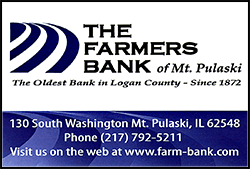|
 “There’s no good evidence at the moment that one method of brushing
is more effective than another,” Dr. John Wainwright, the study’s
lead author, told Reuters Health in an email. “There’s no good evidence at the moment that one method of brushing
is more effective than another,” Dr. John Wainwright, the study’s
lead author, told Reuters Health in an email.
“Ask more than one dentist or hygienist how to brush your teeth, and
they’re likely to give conflicting messages. It’s confusing and
potentially will make you wonder who you should trust to give you
the best advice,” he said.
Wainwright is a practicing dentist from University College London in
England.
He and a colleague, Dr. Aubrey Sheiham, examined tooth-brushing
recommendations in dental textbooks, from toothpaste and toothbrush
companies and from dental associations in 10 countries. Most sources
recommended twice-daily brushing for two minutes, they found.
But dental professionals failed to reach consensus about the
preferred brushing method and remained divided about how often to
brush and for how long.

“It's undermining faith and trust in the profession as a whole,”
Wainwright said.
Though a majority of sources advised brushing for two minutes, some
recommended brushing for up to three minutes. One even recommended
more than three minutes of brushing at each tooth cleaning.
Dentists and dental associations recommend six different methods of
manual tooth-brushing, the authors write in the British Dental
Journal. The methods vary by toothbrush angles and preferred
motions.
“A lot of different dental professionals advise different ways to
brush your teeth,” Wainwright said. “With the evidence currently
available, a complex method may be no more useful than a simple
scrub, which is a lot easier to learn.”
Dental epidemiologist Dr. Benjamin Chaffee said the research stirred
a lively online discussion among dentists. Chaffee is a professor in
the University of California, San Francisco, School of Dentistry and
was not involved in the current study.
“There’s a lot we could be doing better,” he told Reuters Health.
“After 100 years of thinking about tooth-brushing, the profession
hasn’t been able to reach a consensus that has really strong
evidence behind it. It’s entirely plausible that there’s no one
technique that’s superior,” he said.
[to top of second column] |

Chaffee and Wainwright agreed that the conflicting messages point to
the need for evidence-based research into the most effective
tooth-brushing method.
“For something most people do twice a day, you would expect dentists
to send a clearer, more unified message to their patients on how to
brush their teeth," Wainwright said.
He said he wanted to do the current study because his patients
frequently ask him why his tooth-brushing recommendations differ
from the last dental professional they saw.
In a statement, Sheiham suggested brushing “gently with a simple
horizontal scrubbing motion, with the brush at a 45-degree angle to
get to the dental plaque.” Sheiham is an emeritus professor at
University College London.
He said there is little point in brushing after eating sweets or
sugary drinks because bacteria from food begin producing acid in
about two minutes.
“So if you brush your teeth a few minutes after eating sugary
foods,” he said, “the acids will have damaged the enamel.”
SOURCE: http://bit.ly/1oWzGnu British Dental Journal, online August
8, 2014
[© 2014 Thomson Reuters. All rights
reserved.] Copyright 2014 Reuters. All rights reserved. This material may not be published,
broadcast, rewritten or redistributed.

 |